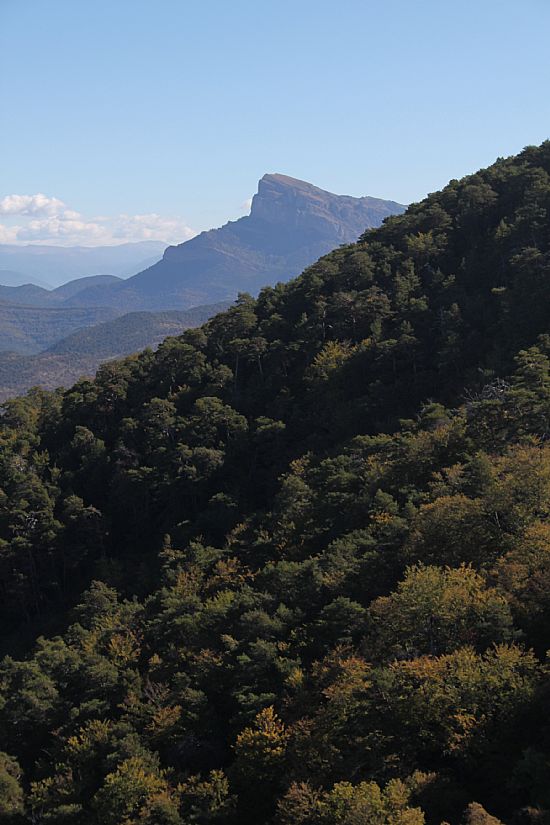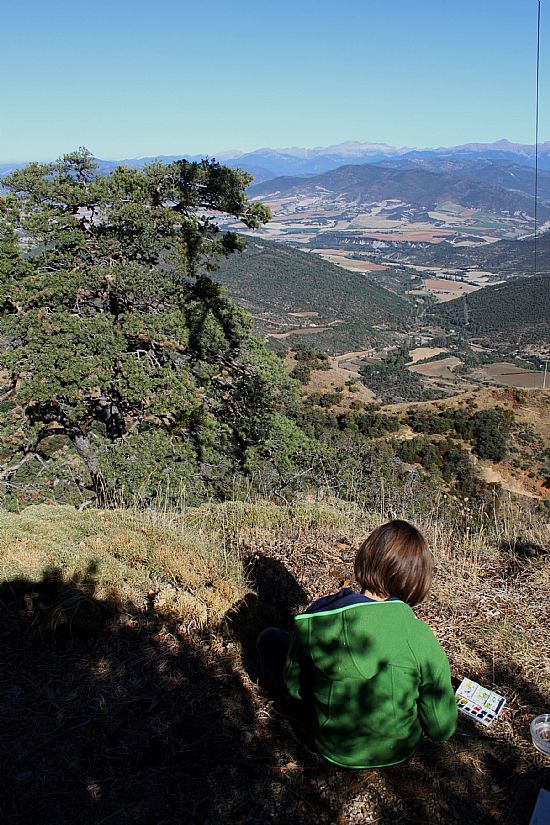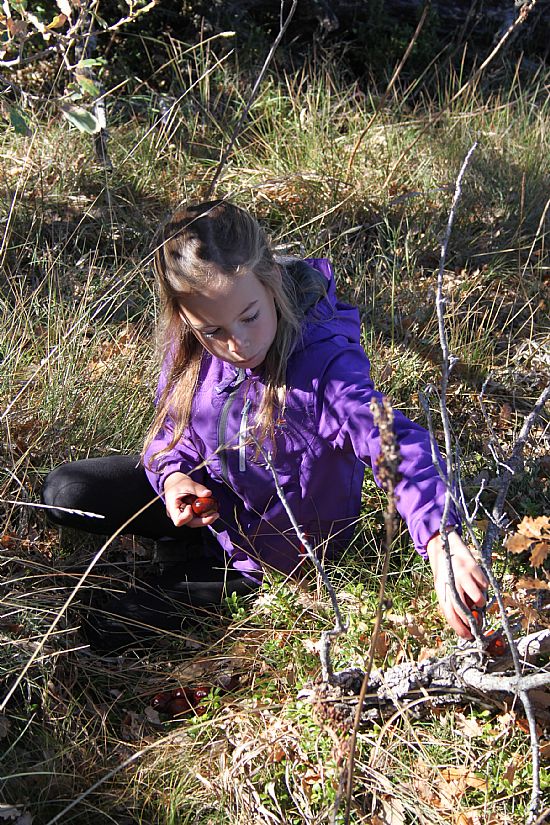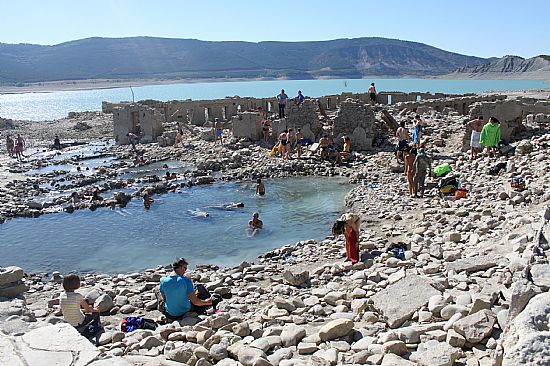Ansó, 9 October
by Isabel Isherwood - 12:12 on 09 October 2016
We had a quiet Saturday. The girls are exhausted at the moment, their brains working overtime as they build up their Spanish alongside all the rest of their schoolwork.
But today (Sunday) we had a day out. This was the first really cold morning of the autumn – the sky was the same translucent blue that we have come to expect, but there was frost on the fields and the rambling pumpkin vines in our neighbour’s garden had blackened and collapsed overnight, to reveal an astonishing quantity of pumpkins underneath.
Jake has joined a local outdoor sports club, Club Mayencos, and today they had a cycle ride planned from Jaca over the mountains of Oroel and San Juan de la Peña.

The girls and I dropped him in the centre of town and headed up the route of the bike ride to the plateau of San Juan de la Peña. We have been up there before on one of our summer visits – the mountain supports fabulous old-growth pine forest with black woodpeckers and a huge diversity of plants and insects; on the plateau there is a hideous, relatively modern monastery that has been converted into a hotel, and a short way down the hill a rather magical and much older monastery built into the cliff. We decided to skip the monasteries for today, and instead walked out through the pinewoods to El Balcon de los Pirineos, where there is a panoramic view of the Pyrenees from the low wooded foothills in the west, through Peña Ezcaurri and the increasingly rocky and magnificent mountains behind Ansó to the stark isolated grandeur of the Pic du Midi d’Ossau and, further east again, the sculpted peaks of Ordessa National Park. Between the mountains and our viewpoint lay the valley of the Río Aragón (we have recently discovered that this valley is also, confusingly, known as the Canal de Berdún, despite there being no canal); a patchwork of fields in shades of terracotta, buff, ashy grey, blonde and green. Vultures and kestrels drifted by below us. We found a spot on the clifftop and Iona began to paint a picture of the view while Rowan disappeared into the bushes with a family of horse chestnuts she’d found on the walk and embarked on a complicated adventure game. By this time the sun was high and the day was warm, and it was very peaceful.


The calm was shattered suddenly and startlingly by not one but many sirens, and after a short while blue flashing lights could be glimpsed through the trees. Iona started to worry that something bad had happened to Jake or one of his group, so I texted him to set her mind at rest. His reply was unexpected: ‘they are our escort!’. It seemed the club was doing a joint ride with the local Guardia Civil, a section of the Police force roughly equivalent to the French Gendarmerie, and this apparently entitled them to a police escort for the day and, effectively, a closed road so they could swoop down the descents without having to worry about oncoming traffic.
We ended the day with a visit to the thermal baths at Tiermas, on the Yesa reservoir. These hot springs were once the site of a large spa complex, the jobs provided by which supported a couple of neighbouring villages. In the late 1950s the Río Aragón was dammed at the village of Yesa and in 1960 the lower valley was flooded to create a reservoir to provide irrigation for the semi-desert lands to the south. Over 1500 people were affected by the loss of land, homes and livelihoods. And the spa and hot springs were drowned with the rest. But in dry periods the level of the reservoir falls by perhaps as much as 20 m, creating a wide and ugly band of unvegetated rubble around the perimeter of the lake, and exposing remnants of valley’s past: the old road, narrow arched bridges over extinct streams, field boundaries, the dead skeletons of trees and the crumbling walls of old farmhouses. During these periods the thermal springs are exposed again, along with the ruins of the old spa buildings, and they are still popular with visitors.
The sight is quite surreal. The ruins look like something from one of the world’s conflict zones: roofless buildings, shattered walls and empty gaping windows; but populated by tanned bathers in brightly-coloured swimwear, picnickers, sunbathers, and naked children, with occasional people covered from head to toe in sulphur-smelling mud stumbling through the ruins like strange alien beings.

We lay in the warm muddy eggy water, an enjoyable experience tinged with mild discomfort over the smell and the slightly unsavoury feeling of sharing your bath with far too many other people. Then Jake went for a swim in the reservoir and I tried rather unsuccessfully to photograph the weirdness of the place, while Iona made a mud-brick shelter and Rowan became Ray from Star Wars with her staff and her bag, gleaning a living from the desert……
Add your comment